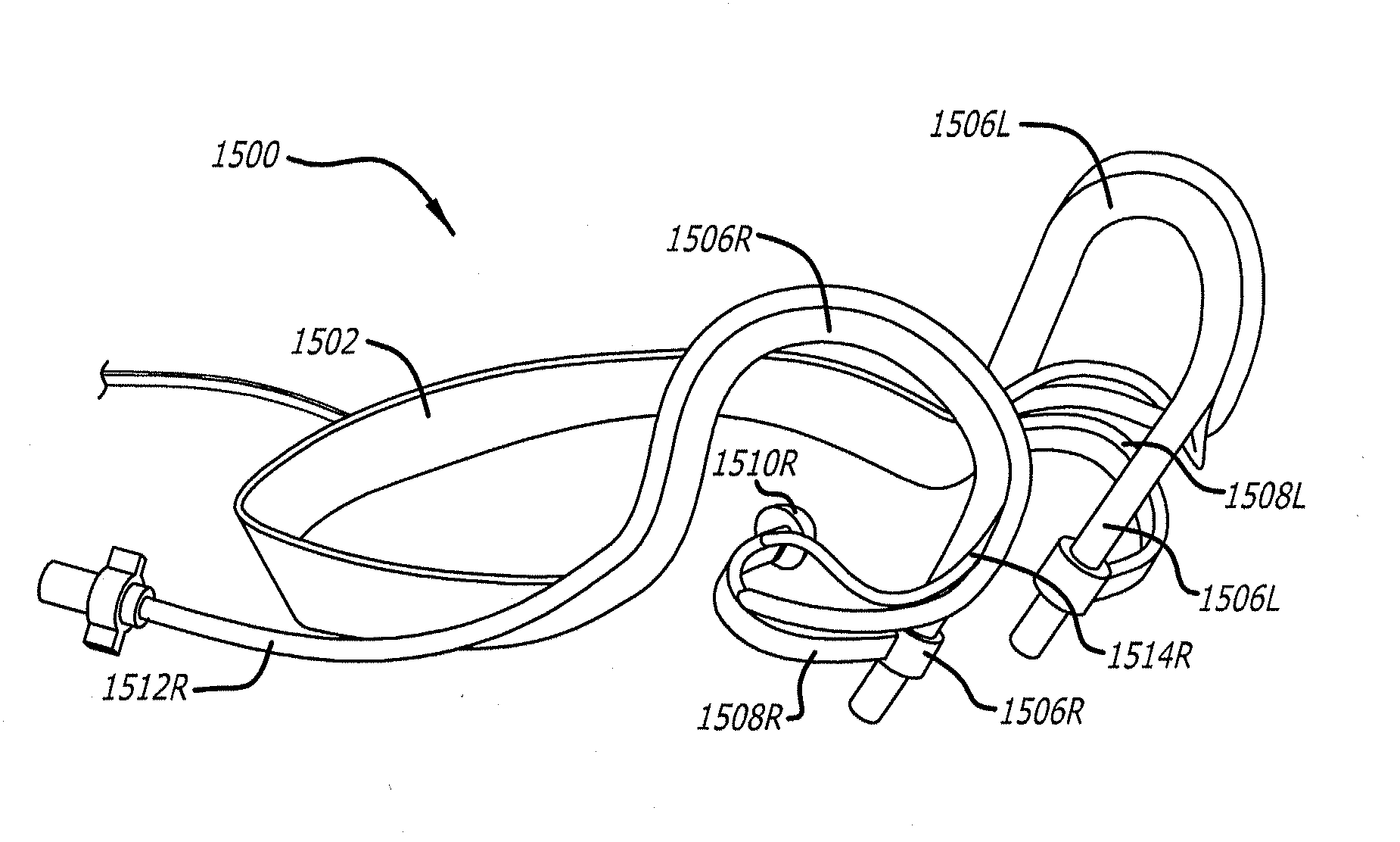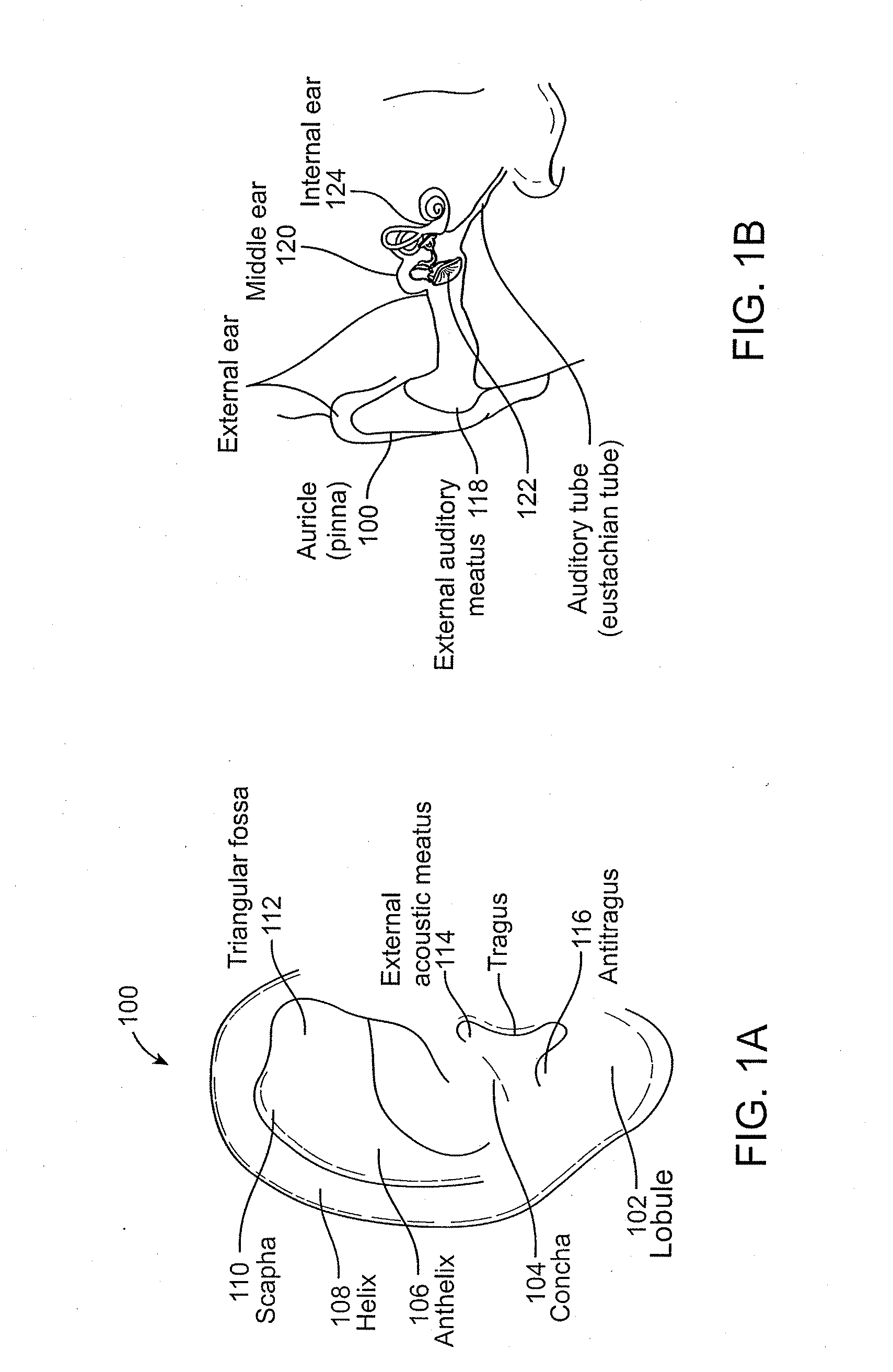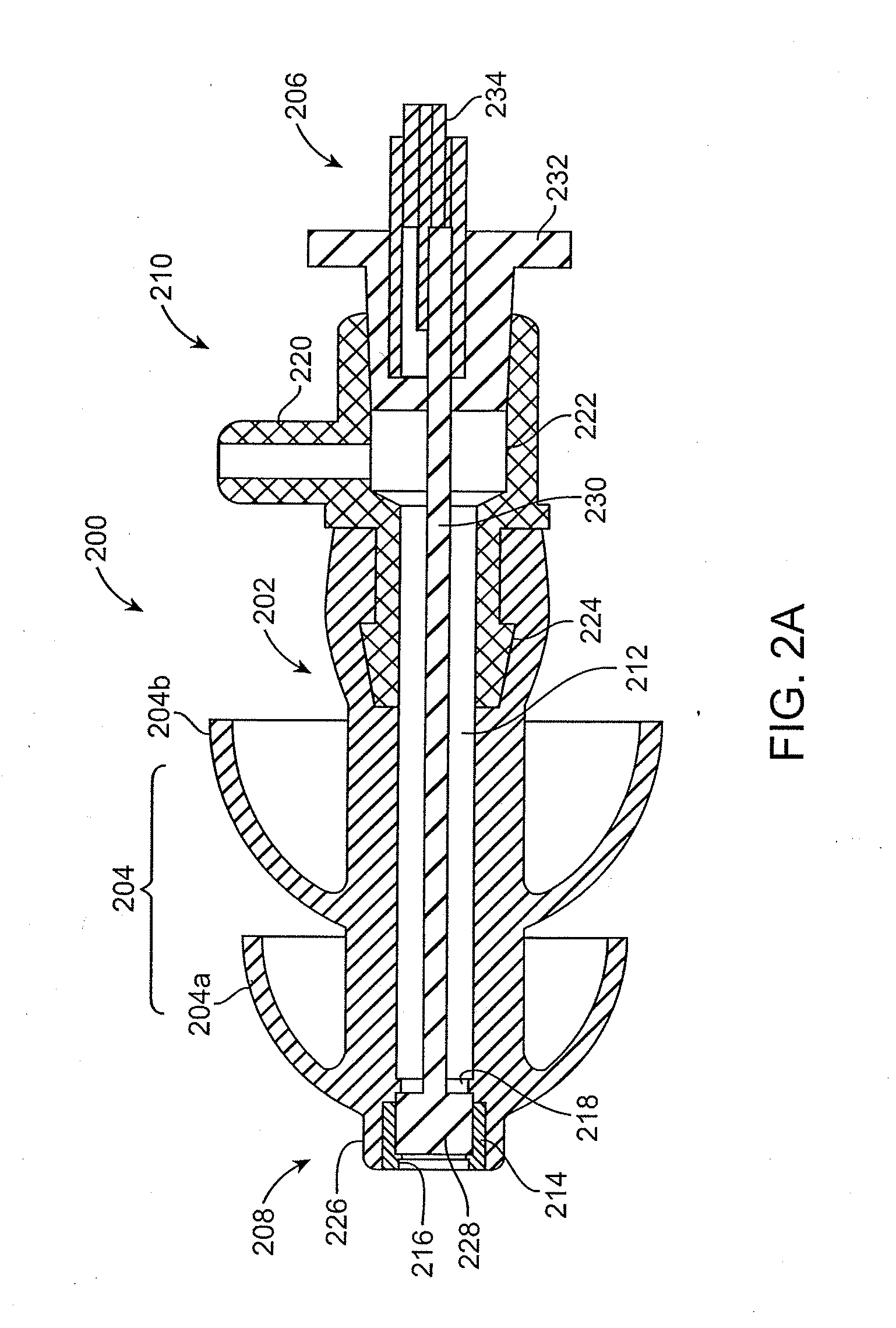Systems and methods for anesthetizing ear tissue
a technology of ionophoretic drugs and anesthesia, applied in the field of ionophoretic drug delivery methods and systems, can solve the problems of limited success of prior ionophoretic devices and systems, inability to be used in all patients, and difficulty in children's tm, etc., and achieve the effect of sufficient flexibility
- Summary
- Abstract
- Description
- Claims
- Application Information
AI Technical Summary
Benefits of technology
Problems solved by technology
Method used
Image
Examples
Embodiment Construction
[0062]FIG. 1A shows a view of an outer ear. The outer ear includes a major element known as the auricle or pinna 100. The outer ear serves as a funnel for directing sounds into the internal portions of the ear. The major physical features of the ear include the lobule 102, concha 104, anthelix 106, helix 108, scapha 110, triangular fossa 112, external acoustic meatus 114, tragus 116, and antitragus 118.
[0063]FIG. 1B shows a cross-section of the inner and outer portions of the ear. The pinna 100 is shown connected to the external auditory meatus 118, or ear canal. The ear canal 118 is shown as a relatively straight passage, but is often a more curved, tortuous passageway. The ear canal 118 is connected to the middle ear 120, which includes the ear drum 122. The middle ear 120 in turn is connected to the internal ear 124. The ear drum 122 normally has a pocket of air behind an outer portion called the tympanic membrane. When the middle ear 120 becomes infected, fluid swells inside the...
PUM
 Login to View More
Login to View More Abstract
Description
Claims
Application Information
 Login to View More
Login to View More - R&D
- Intellectual Property
- Life Sciences
- Materials
- Tech Scout
- Unparalleled Data Quality
- Higher Quality Content
- 60% Fewer Hallucinations
Browse by: Latest US Patents, China's latest patents, Technical Efficacy Thesaurus, Application Domain, Technology Topic, Popular Technical Reports.
© 2025 PatSnap. All rights reserved.Legal|Privacy policy|Modern Slavery Act Transparency Statement|Sitemap|About US| Contact US: help@patsnap.com



